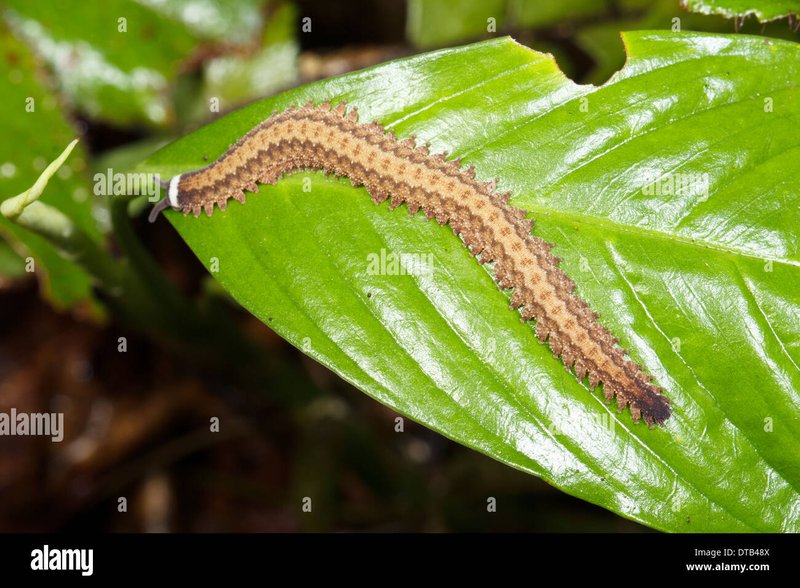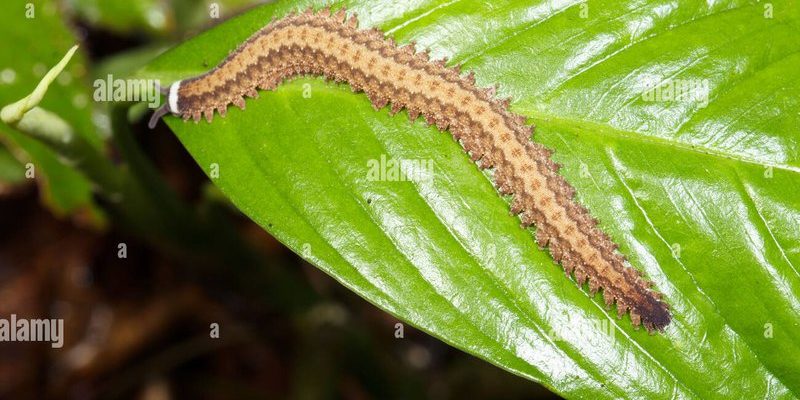
Velvet worms, or *Onychophora*, have captured the curiosity of scientists and nature lovers alike. With their soft bodies and unique hunting styles, they remind us that even the quirkiest organisms have a part to play in nature’s grand scheme. So, let’s explore how these remarkable creatures fit into the forest food web, the roles they fulfill, and why they matter to the health of their habitats.
What Are Velvet Worms?
Velvet worms belong to a unique group of invertebrates that sit somewhere between insects and annelids (worms). They’re often described as looking like a cross between a caterpillar and a slug, sporting soft, velvety skin and multiple stubby legs. Believe it or not, there are about 200 known species of velvet worms, and they’re mostly found in tropical and temperate forests around the world.
These little critters thrive in moist environments, often hiding under damp leaves, logs, or rocks. They’re nocturnal hunters, coming out at night to search for their favorite meal: insects and small invertebrates. Their distinct slime secretions serve a purpose too—used for hunting as a sticky trap to snag unsuspecting prey. Isn’t it fascinating how something that looks so harmless can be such an effective predator?
Velvet Worms as Predators
As predators, velvet worms play an essential role in controlling the populations of other small arthropods in the ecosystem. By keeping these populations in check, they help maintain a balance in the food web. Here’s how it works:
- Hunting Style: Velvet worms use a unique method to catch their prey. They shoot out a stream of slime that can reach up to 20 centimeters (about 8 inches) away. When the slime hits its target, it instantly encases the prey, making escape nearly impossible.
- Diet: Their typical diet includes soft-bodied insects like spiders and small beetles. By consuming these creatures, velvet worms prevent any one species from becoming too dominant in their habitat.
- Feeding Frequency: Interestingly, these worms don’t eat every day. They can survive for long periods without food, which allows them to withstand changes in their environment.
This unique hunting mechanism not only showcases their adaptability but also highlights the interconnectedness of species within their ecosystem. If velvet worms didn’t control insect populations, those numbers could spiral, leading to a cascade of effects throughout the food web.
The Role of Velvet Worms in Soil Health
One aspect that often gets overlooked is how velvet worms contribute to soil health. As they dig and move through the forest floor, they aerate the soil. This helps facilitate water retention and nutrient cycling, which are vital for the growth of plants. Here’s why this matters:
- Nutrient Cycling: Velvet worms contribute to the breakdown of organic matter in the soil. Their digestion of insects and other organic materials releases nutrients, enriching the soil for plants.
- Soil Aeration: By creating tunnels as they move, velvet worms help air and water penetrate the ground. This is crucial for plant roots, allowing them to access the nutrients and moisture they need to thrive.
- Supporting Plant Life: Healthy soil promotes healthy plants, which in turn supports a whole array of life from herbivores to predators. So, velvet worms are like unsung heroes of plant health!
In this way, velvet worms act as small ecosystem engineers, helping to sustain the very base of the forest food web. Without them, the soil quality could decline, affecting numerous species dependent on healthy plant life.
Interactions with Other Species
In the forest food web, everything is linked. Velvet worms interact with various species, from other predators to parasitic organisms. Their presence can indirectly affect many other creatures in their habitat. Let’s break it down:
- Predator-Prey Relationships: As prey for predators like birds and small mammals, velvet worms are essential food sources for these animals. Their population can influence the number of these larger predators.
- Competition: Velvet worms may face competition from other predators in the forest. This competition can impact their hunting efficiency and survival rates. It’s a constant balancing act!
- Parasites and Diseases: Like many organisms, velvet worms can be susceptible to parasites. The presence of parasites can affect their health and survival, which can ripple through the food web.
These interactions show how velvet worms are interwoven into the fabric of forest life. Their role is a reminder that biodiversity matters—every species brings something valuable to the table.
Conservation and the Importance of Velvet Worms
With the current state of the environment, velvet worms face threats from habitat destruction and climate change. Losing these creatures would mean losing an important link in the food web. Here’s why conserving them is crucial:
- Indicators of Ecosystem Health: Velvet worms can serve as indicators of a healthy forest ecosystem. Their presence often signifies a balanced environment, while their decline can signal trouble.
- Preserving Biodiversity: As integral components of the food web, protecting velvet worms helps maintain overall biodiversity. This is essential for ecosystem resilience and stability.
- Research Opportunities: Studying velvet worms can provide insights into evolutionary biology and the functioning of ecosystems. Their unique adaptations can teach us a lot about survival in changing environments.
Conservation efforts aimed at protecting velvet worm habitats can help ensure that these small but mighty creatures continue to thrive, supporting the entire forest community.
So there you have it—velvet worms may not be the most glamorous creatures in the forest, but their contributions to food webs and ecosystems are undeniably important. By keeping insect populations in check, enriching the soil, and serving as prey for larger predators, they help maintain the delicate balance of life in the forest.
Next time you wander through a forest, take a moment to appreciate the little things, like velvet worms. They might be small and a bit strange, but they are vital players in the intricate game of life. Embracing the quirkiness of nature is what makes our world so fascinating, don’t you think?

